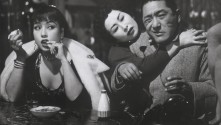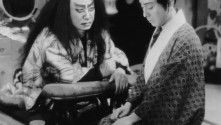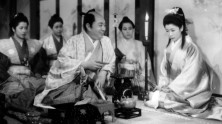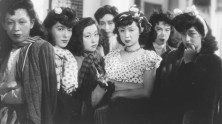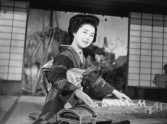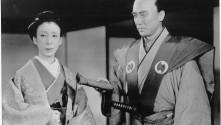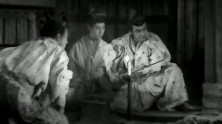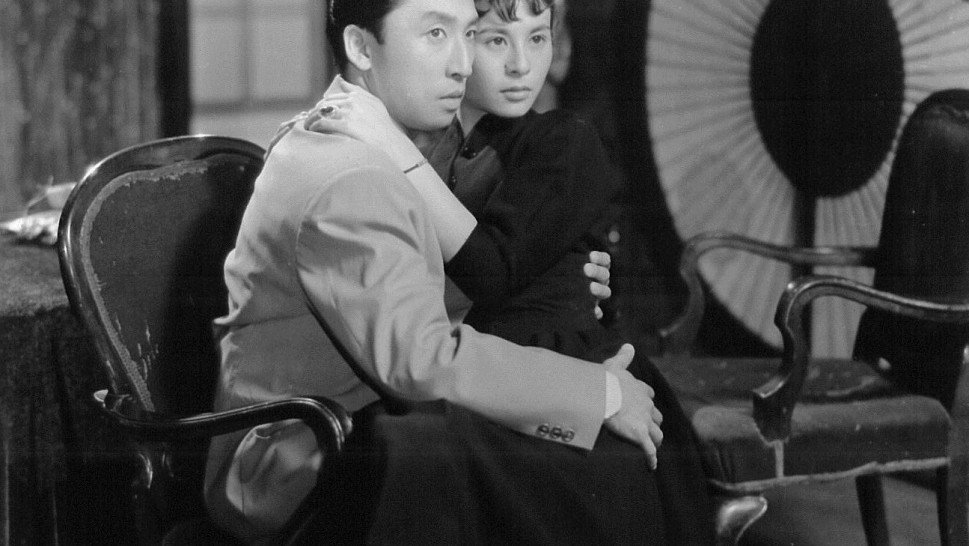
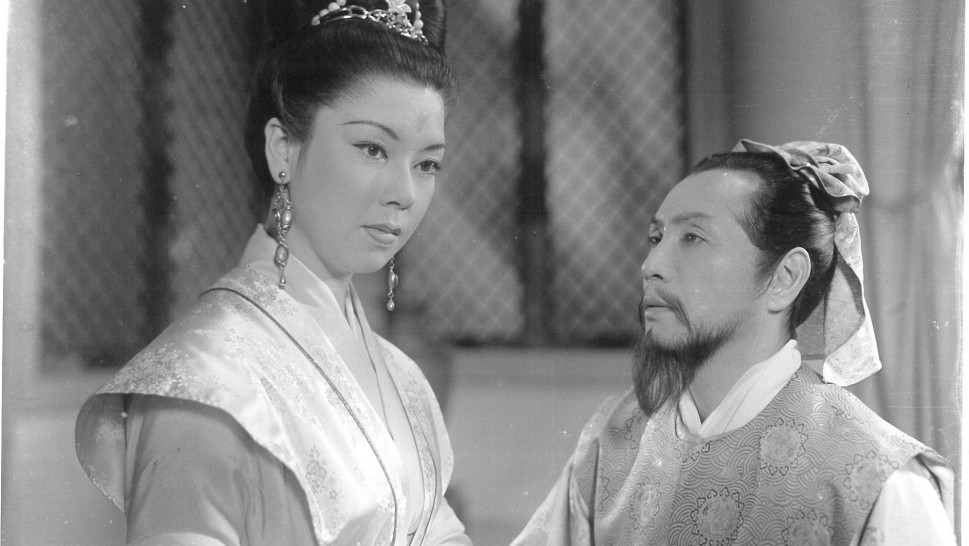

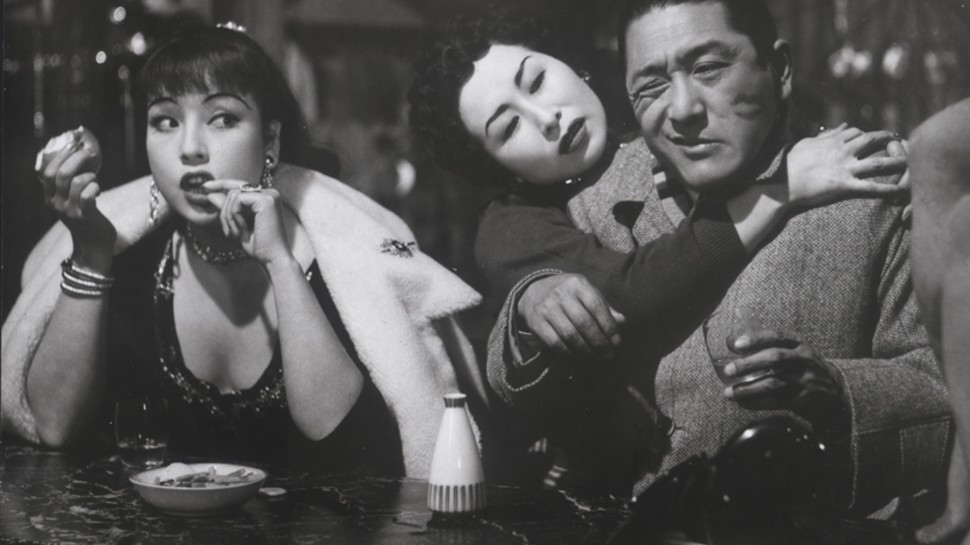
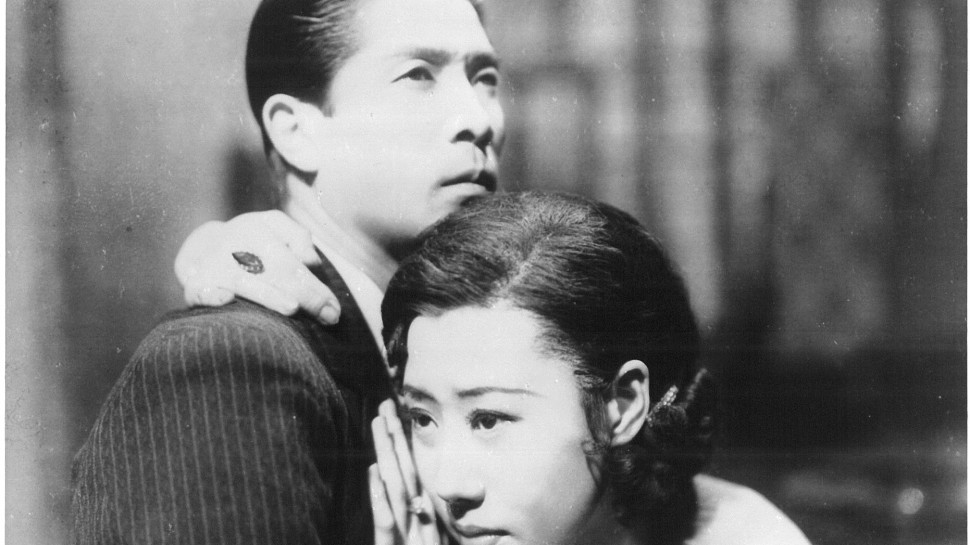
The Tales and Tragedies of Kenji Mizoguchi
Kenji Mizoguchi (1898-1956) was a foundational figure of the Japanese cinema and one of its uncontestably supreme artists. Mizoguchi remains best known today for his late masterworks of the 1950s and especially The Life of Oharu, Ugetsu and Sansho the Bailiff, haunting visions of feudal Japan tragically shaped by the suffering heroines and inexorable tracking shots often declared the pillars of Mizoguchi’s cinema. Exalted by Godard, Rivette, Rohmer, the slow unspooling of time and space in Mizoguchi’s late films was celebrated as a sublime realization of the stylized realism preached by the spiritual father of the nouvelle vague, André Bazin. With their obsessively detailed attention to period costume, architecture and the traditional Japanese arts and literature from which they drew deep inspiration, Mizoguchi’s late films also branded him, internationally, as the most quintessentially Japanese filmmaker, an epithet still active, although also extended these days to Yasujiro Ozu. While indisputably a pinnacle of Mizoguchi’s cinema, the late films offer, however, only a partial portrait of a filmmaker whose larger career was notably volatile and defined by a mercurial, even impulsive, imagination that frequently pulled him in contradictory directions.
This complete retrospective of Mizoguchi’s extant feature films reveals the different paths pursued throughout his long career which zigzagged between distinct genres and, unlike many of his contemporaries, between different studios, both established major and precariously minor production companies. While most of the silent films directed during Mizoguchi’s prolific first years as a director have been lost, the broad range of their subject and genres—from adaptations of Eugene O’Neil and Tolstoy to Expressionist imitations of Caligari—make clear the broad range of his interests while also contextualizing The 47 Ronin and his other (almost) all male anti-action films made during the Second World War and under the close supervision of government censors. Most importantly, this retrospective offers an especially useful corrective for understanding the central role of women in Mizoguchi’s cinema which is often sweepingly celebrated as proto-feminist, thanks to the outspoken, fiery critique of cruel misogynist patriarchy in such powerful films as Osaka Elegy, Women of the Night and Street of Shame. Without dulling the sharp-edged social critique honed by many of Mizoguchi’s greatest films, the recurrent figure of the suffering woman must also be seen as just one expression of a romantic fatalism which increasingly pervades Mizoguchi’s cinema as a kind of omnipotent gravitational force controlling both the steady downward spiral of his characters and the inexorable movement of his camera whose controlled distance and dispassionate avoidance of close-ups lends a certain coldness to Mizoguchi’s visions of a fallen world.
Writings on Mizoguchi’s cinema have tended to fetishistically recall the same incidents of his life as evidence of his cinema’s autobiographical roots: his father’s failed business venture and the consequent financial ruin of Mizoguchi’s family when he was a young boy, then the sale of his beloved older sister Suzuko to a geisha house which followed not long afterward. Deeper study of Mizoguchi’s life offers equally resonant material: his disastrous love affair with a prostitute which ended when she almost fatally stabbed him in the back, and the sudden descent into madness of his first wife who Mizoguchi commited to an asylum, and then began to live with her younger sister and her young children. While traces of these episodes echo across Mizoguchi’s films, any autobiographical reading of his cinema must also heed the deep imprint left upon the artist’s imagination by Mizoguchi’s birth and upbringing in the Meiji Era, a period of intense social, political and cultural upheaval that marked his country’s rapid transition during this period from a feudalist isolationism to a modern nation-state with increasingly bellicose expansionist ambitions. Indeed, one of the central ideas of Mizoguchi’s cinema lies in his equal interest in contemporary and pre-modern Japan and, moreover his insistence on a clear continuity across the two periods in terms of the atavistically rigid social and sexist hierarchy that his films trace from the Seventeenth century Kyoto of The Life of Oharu to the Thirties Osaka of Naniwa Elegy and the Fifties Tokyo of Street of Shame.
Mizoguchi was notorious as a tyrannical martinet who tirelessly pushed actors, screenwriters, set designers and cinematographers alike to realize the ever-shifting images and ideas driving his films. Indeed, the naturalist performance which remains one of the keys of Mizoguchi’s cinema was legendarily derived from his uncompromising striving for the flickering essence of each scene, gesture and line of dialogue and his ability to ask a performer to repeat a line endlessly until it came out just right. Equally perfectionist was his insistence that his sets be built with an unprecedented historical and architectural fidelity—using exact blueprints and filled not with props but with genuine antiques. Mizoguchi nevertheless inspired an incredible loyalty among his principal collaborators, chief among them the great cinematographer Kazuo Miyagawa, screenwriter Yoshikata Yoda and actress Kinuyo Tanaka who was Mizoguchi’s main star for a full seventeen years. Indeed, for the emotional depth and power of the films they made together, Kinuyo-Mizoguchi stand as one of the great actress-director couples, together with Dietrich-Von Sternberg, Vitti-Antonioni, Hara-Ozu.
Read a version of the recent talk on Mizoguchi given by David Bordwell, Professor of Film Studies at the University of Wisconsin - Madison at the Museum of the Moving Image.




